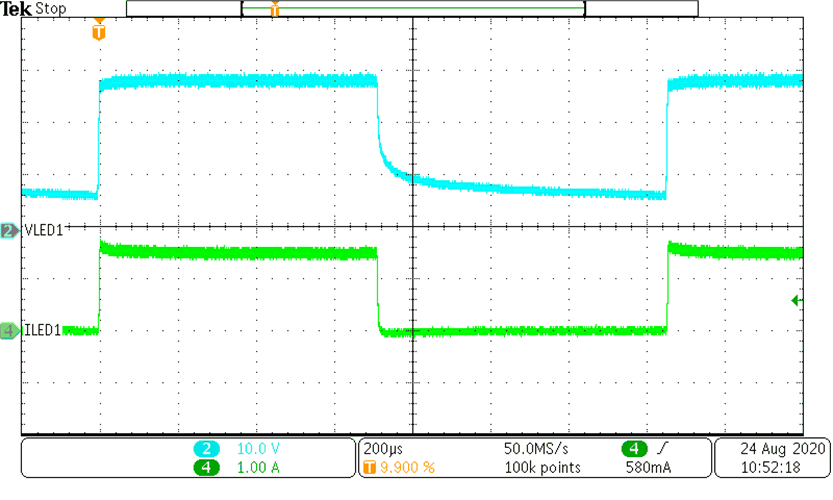SLUUCC4A October 2020 – September 2021 TPS92520-Q1
- Trademarks
- General Texas Instruments High Voltage Evaluation (TI HV EMV) User Safety Guidelines
- 1Description
- 2Performance Specifications
- 3Performance Data and Typical Characteristic Curves
- 4Schematic, PCB Layout, and Bill of Materials
- 5Software
- 6TPS92520EVM-133 Power Up and Operation
- 7Revision History
3.3 PWM Dimming
Figure 3-4 shows the load transient on the output of the TPS92520EVM-133 LED buck driver. The output LED string controlled by the PWM dimming registers at 50% duty cycle at 610 Hz PWM frequency. The VLED waveform (channel 2 of the osope) and the ILED waveform (channel 4 of the oscope) shows the resulting undershoot and overshoot.

VIN = 48 V, VLED1 = 28 V, ILED1 = 1.5 A
Figure 3-4 1.6-A Buck LED Driver Load Transient